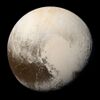Astronomy:(523759) 2014 WK509
| Discovery[1] | |
|---|---|
| Discovered by | Pan-STARRS 1 |
| Discovery site | Haleakala Obs. |
| Discovery date | 14 September 2010 |
| Designations | |
| (523759) 2014 WK509 | |
| Minor planet category | TNO[2] · SDO[3] distant[1] |
| Orbital characteristics[2] | |
| Epoch 4 September 2017 (JD 2458000.5) | |
| Uncertainty parameter 5[2] · 3[1] | |
| Observation arc | 3.24 yr (1,185 days) |
| |{{{apsis}}}|helion}} | 61.579 AU |
| |{{{apsis}}}|helion}} | 40.098 AU |
| 50.838 AU | |
| Eccentricity | 0.2113 |
| Orbital period | 362.49 yr (132,399 days) |
| Mean anomaly | 271.50° |
| Mean motion | 0° 0m 9.72s / day |
| Inclination | 14.542° |
| Longitude of ascending node | 41.033° |
| 135.10° | |
| Physical characteristics | |
| Mean diameter | 574 km (est.)[4] 584 km (est.)[3] |
| Geometric albedo | 0.09 (assumed)[3][4] |
| Absolute magnitude (H) | 4.4[1][2] 4.5[4] |
(523759) 2014 WK509 (provisional designation 2014 WK509) is a trans-Neptunian object in the scattered disc, located in the outermost regions of the Solar System. It was discovered on 14 September 2010, by Pan-STARRS at Haleakala Observatory on the island of Maui, Hawaii, in the United States.[1] The object's diameter has been estimated to measure approximately 600 kilometers.[3][4]
Orbit and classification
2014 WK509 belongs to the scattered disc population. It orbits the Sun at a distance of 40.1–61.6 AU once every 362 years and 6 months (132,399 days; semi-major axis of 50.8 AU). Its orbit has an eccentricity of 0.21 and an inclination of 15° with respect to the ecliptic.[2] The body's observation arc begins on 14 September 2011 at Haleakala, more than 3 years prior to its official first observation.[1] Its orbit still has a high uncertainty.[1][2]
Numbering and naming
This minor planet was numbered by the Minor Planet Center on 25 September 2018 (M.P.C. 111779).[5] As of 2018, it has not been named.[1]
Physical characteristics
Based on an absolute magnitude of 4.4,[2] and an assumed albedo of 0.09, the Johnston's archive estimates a mean-diameter of approximately 584 kilometers (363 mi).[3]
As of 2018, no rotational lightcurve of this object has been obtained from photometric observations. The object's rotation period, pole and shape remain unknown.[2]
References
- ↑ 1.0 1.1 1.2 1.3 1.4 1.5 1.6 1.7 "2014 WK509". Minor Planet Center. https://www.minorplanetcenter.net/db_search/show_object?object_id=2014+WK509. Retrieved 8 February 2018.
- ↑ 2.0 2.1 2.2 2.3 2.4 2.5 2.6 2.7 "JPL Small-Body Database Browser: (2014 WK509)". Jet Propulsion Laboratory. https://ssd.jpl.nasa.gov/sbdb.cgi?sstr=3755575. Retrieved 8 February 2018.
- ↑ 3.0 3.1 3.2 3.3 3.4 Johnston, Wm. Robert (30 December 2017). "List of Known Trans-Neptunian Objects". Johnston's Archive. http://www.johnstonsarchive.net/astro/tnoslist.html. Retrieved 8 February 2018.
- ↑ 4.0 4.1 4.2 4.3 Michael E. Brown. "How many dwarf planets are there in the outer solar system?". California Institute of Technology. http://web.gps.caltech.edu/~mbrown/dps.html. Retrieved 8 February 2018.
- ↑ "MPC/MPO/MPS Archive". Minor Planet Center. https://www.minorplanetcenter.net/iau/ECS/MPCArchive/MPCArchive_TBL.html. Retrieved 7 October 2018.
External links
- List Of Centaurs and Scattered-Disk Objects, Minor Planet Center
- (523759) 2014 WK509 at AstDyS-2, Asteroids—Dynamic Site
- (523759) 2014 WK509 at the JPL Small-Body Database
 |



